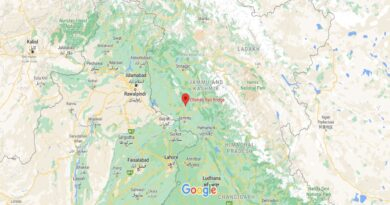Synthetic biology
Context:
A draft foresight paper on synthetic biology released by the Department of Biotechnology has stressed the need for a national policy that can consolidate India’s stand on the issue.
Contents
About Synthetic Biology:
- Synthetic biology (SynBio) is a multidisciplinary area of research that seeks to create new biological parts, devices, and systems, or to redesign systems that are already found in nature.
- It is a branch of science that encompasses a broad range of methodologies from various disciplines, such as biotechnology, genetic engineering, molecular biology, molecular engineering, systems biology, membrane science, biophysics, chemical and biological engineering, electrical and computer engineering, control engineering and evolutionary biology.
- Due to more powerful genetic engineering capabilities and decreased DNA synthesis and sequencing costs, the field of synthetic biology is rapidly growing.
- In 2016, more than 350 companies across 40 countries were actively engaged in synthetic biology applications; all these companies had an estimated net worth of $3.9 billion in the global market
- The term ‘synthetic biology’ was first used by Barbara Hobomin in 1980, to describe bacteria that had been genetically engineered using recombinant DNA technology.
- Synthetic biology refers to the science of using genetic sequencing, editing, and modification to create unnatural organisms or organic molecules that can function in living systems.
- Synthetic biology enables scientists to design and synthesise new sequences of DNA from scratch.
- The term was used to describe the synthesis of unnatural organic molecules that function in living systems.
- More broadly in this sense, the term has been used with reference to efforts to ‘redesign life’
What is the difference between synthetic biology and genome editing?
In some ways, synthetic biology is similar to another approach called “genome editing” because both involve changing an organism’s genetic code; however, some people draw a distinction between these two approaches based on how that change is made.
In synthetic biology, scientists typically stitch together long stretches of DNA and insert them into an organism’s genome. These synthesized pieces of DNA could be genes that are found in other organisms or they could be entirely novel.
In genome editing, scientists typically use tools to make smaller changes to the organism’s own DNA. Genome editing tools can also be used to delete or add small stretches of DNA in the genome.
Applications
- Synthetic biology has applications in various fields from developing synthetic organisms for vaccination to creating natural products in a lab such as vanillin, the organic compound extracted from vanilla seeds, which can now be grown in yeasts with additional plant genomes.
- In the pharmaceutical industry, synthetic biology can be used to make natural compounds such as artemisinin used for the treatment of malaria and Car T cell therapy for cancer treatment.
- It is starting to be used in the fashion industry as well; some companies are exploring the possibility of dyeing jeans without producing hazardous waste.
- Then there are companies using it to deliver fixed nitrogen to plants instead of using fertilisers, engineering microbes to create food additives or brewing proteins.
- Other applications to therapeutics include engineered networks and organisms for disease-mechanism elucidation, drug-target identification, drug-discovery platforms, therapeutic treatment, therapeutic delivery, and drug production and access.
What are Potential Negative Impacts of Synthetic Biology?
- Negative Environmental Health: The intentional or accidental release of genetically engineered organisms into the environment could have significant negative impacts on both human and environmental health.
- Misuse of these technologies and a failure to account for unintended consequences could cause irreversible environmental damage.
- Do-It-Yourself Biology: It’s a movement of “citizen scientists” interested in synthetic biology experiments that has become an international phenomenon over the last decade.
- Often with little prior knowledge of the field, enthusiasts meet in makeshift labs to take crash courses in biotechnology and conduct hands-on experiments.
- Ethical Concerns: Many of the ethical questions relevant to synthetic biology are similar to ethical discussions related to genome editing like:
- Are humans crossing moral boundaries by redesigning organisms with synthetic biology techniques?
- If synthetic biology yields new treatments and cures for diseases, who in our society will have access to them?
Way Forward
- Under the precautionary principle, stringent risk assessment and the inclusion of diverse stakeholder perspectives should be applied in the development and handling of innovative synthetic biology applications and products.
- It is time for India to consolidate its stand on the science of synthetic biology and communicate its interests and aspirations in relevant international fora with clarity and should avoid conflicting stands on science on one hand and policy on the other.
- It is time to create a policy for synthetic biology now more than ever as it is rapidly evolving with new discoveries happening every year.
- Soon we will start to see some products and we need to be ready with the regulatory framework.
- There is also a need to look at the benefits of the products and the risk it poses to biodiversity.
- Soon we will start to see some products and we need to be ready with the regulatory framework.
What are Governance, Policy And Regulatory Aspects Relevant To Synthetic Biology?
International treaties and organisations related to synthetic biology
|
Source: Indian Express
You can find many articles on SCIENCE AND TECHNOLOGY (part of GS III) in our website. Go through these articles share with your friends and post your views in comment section.
Discover more from Simplified UPSC
Subscribe to get the latest posts sent to your email.



